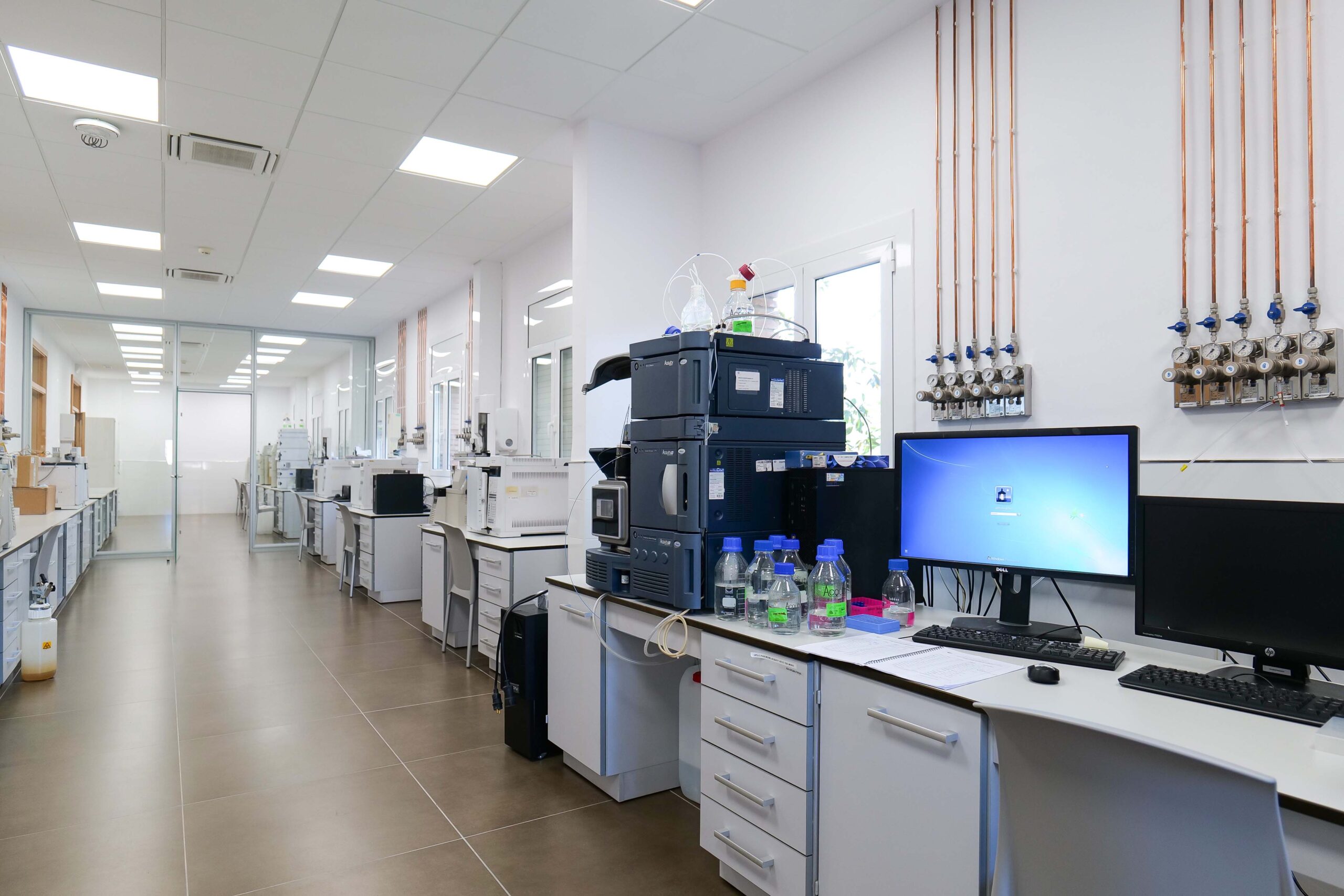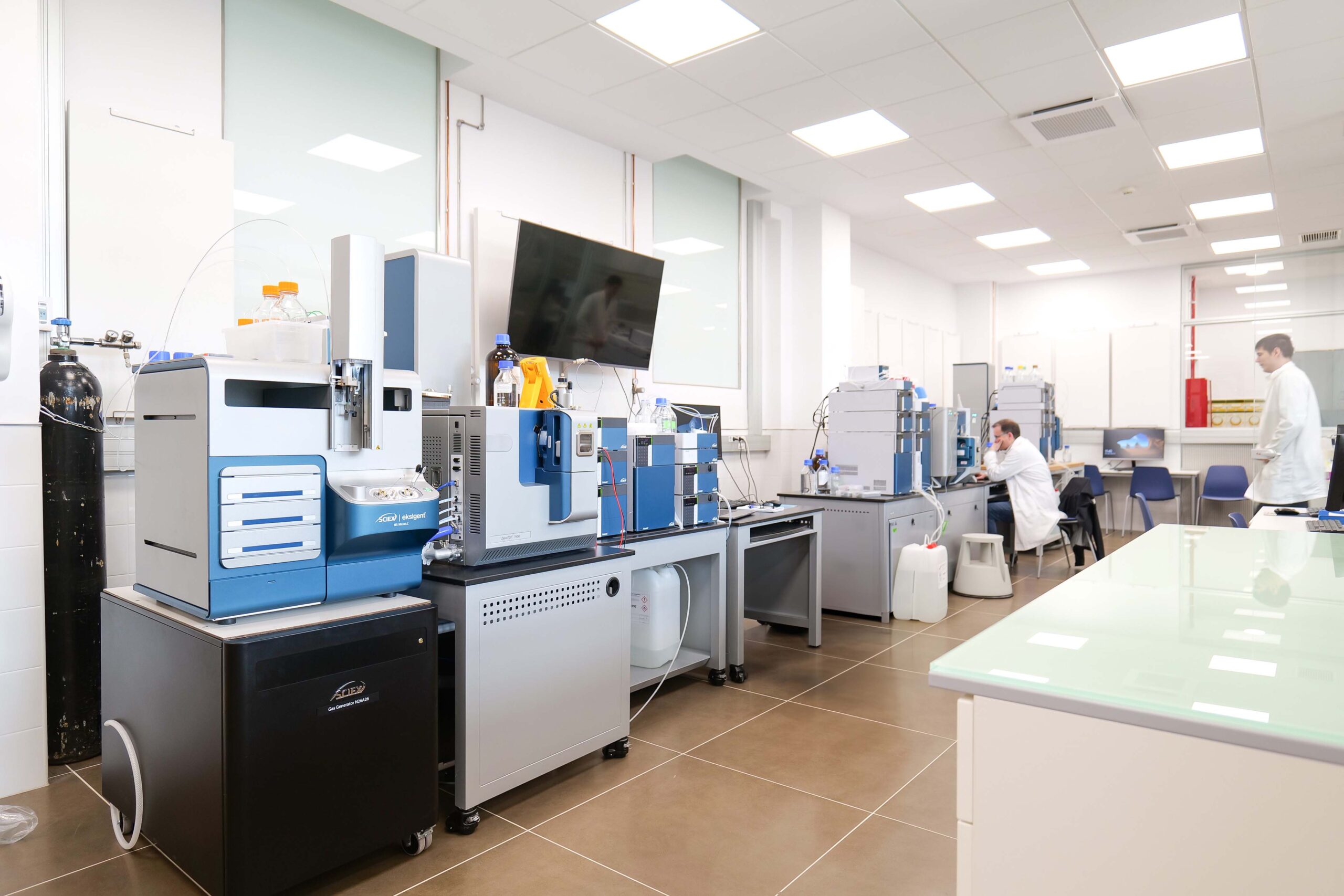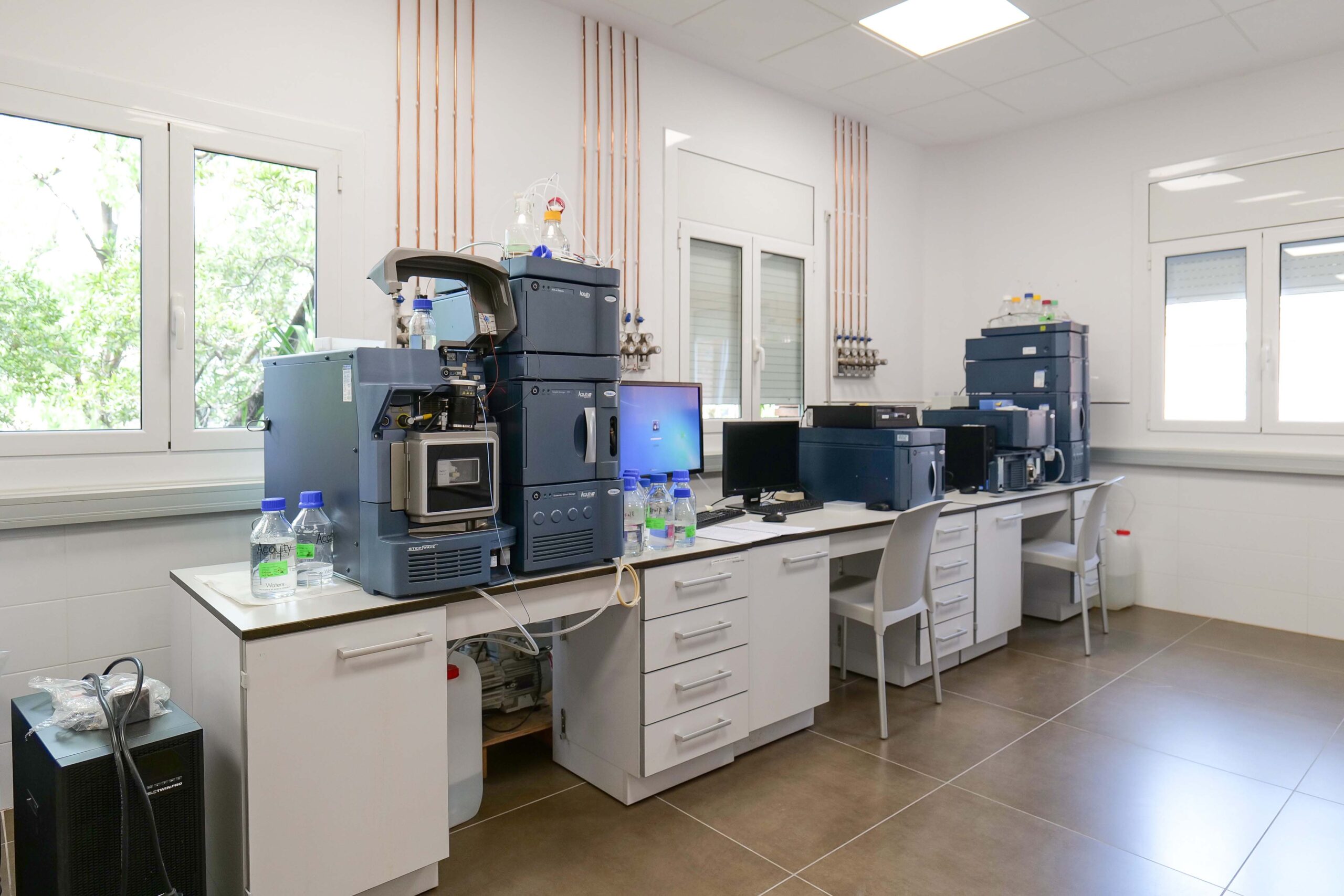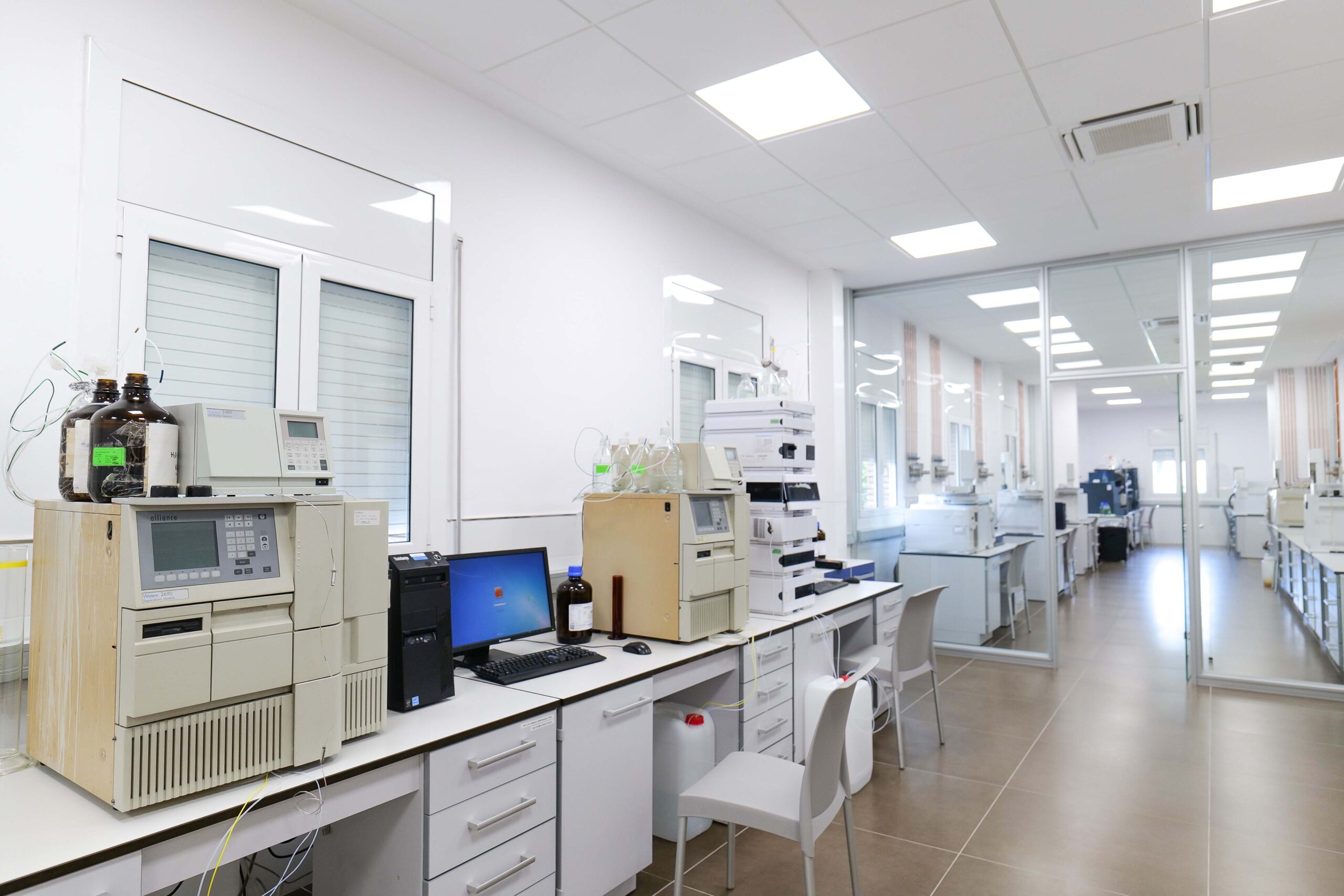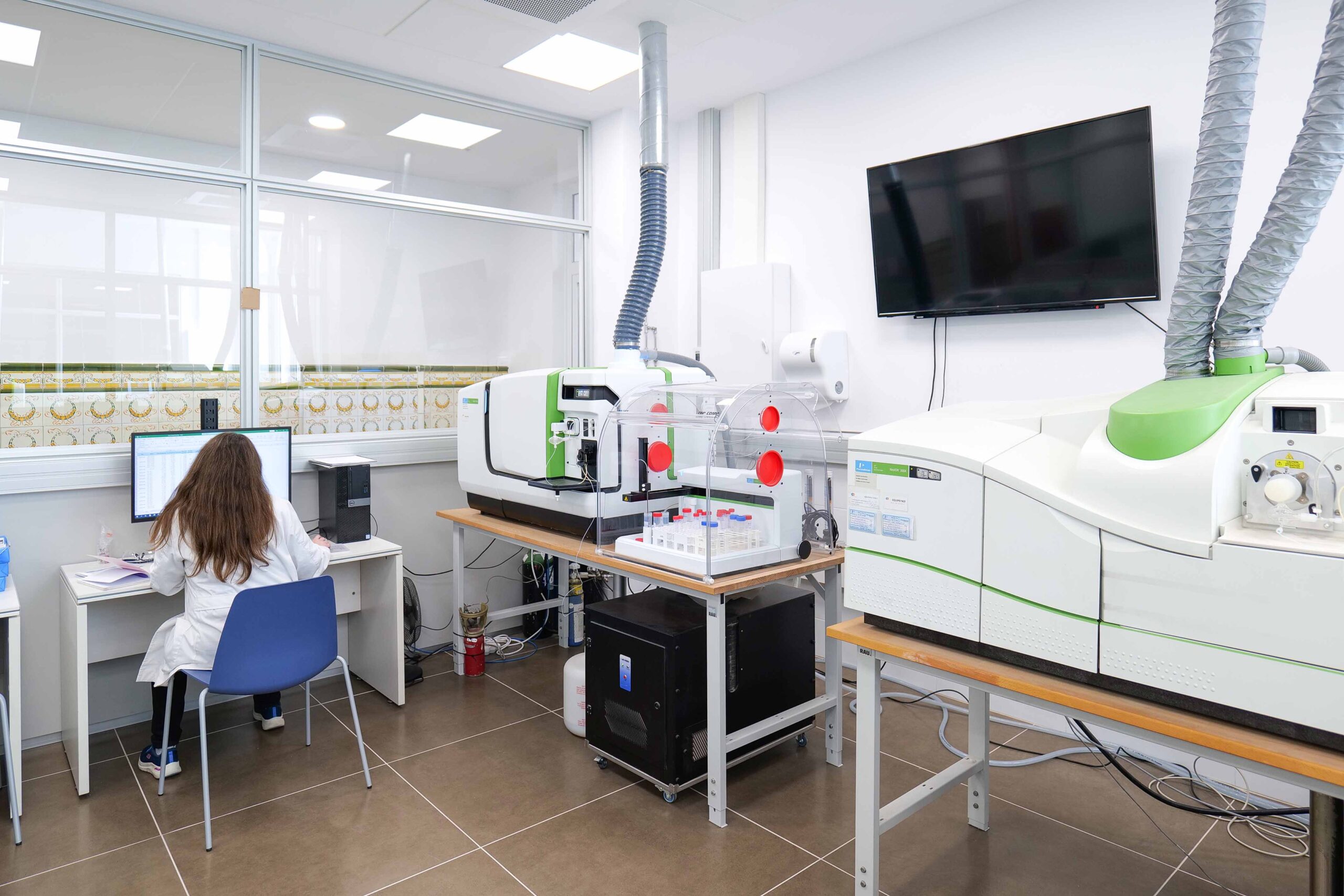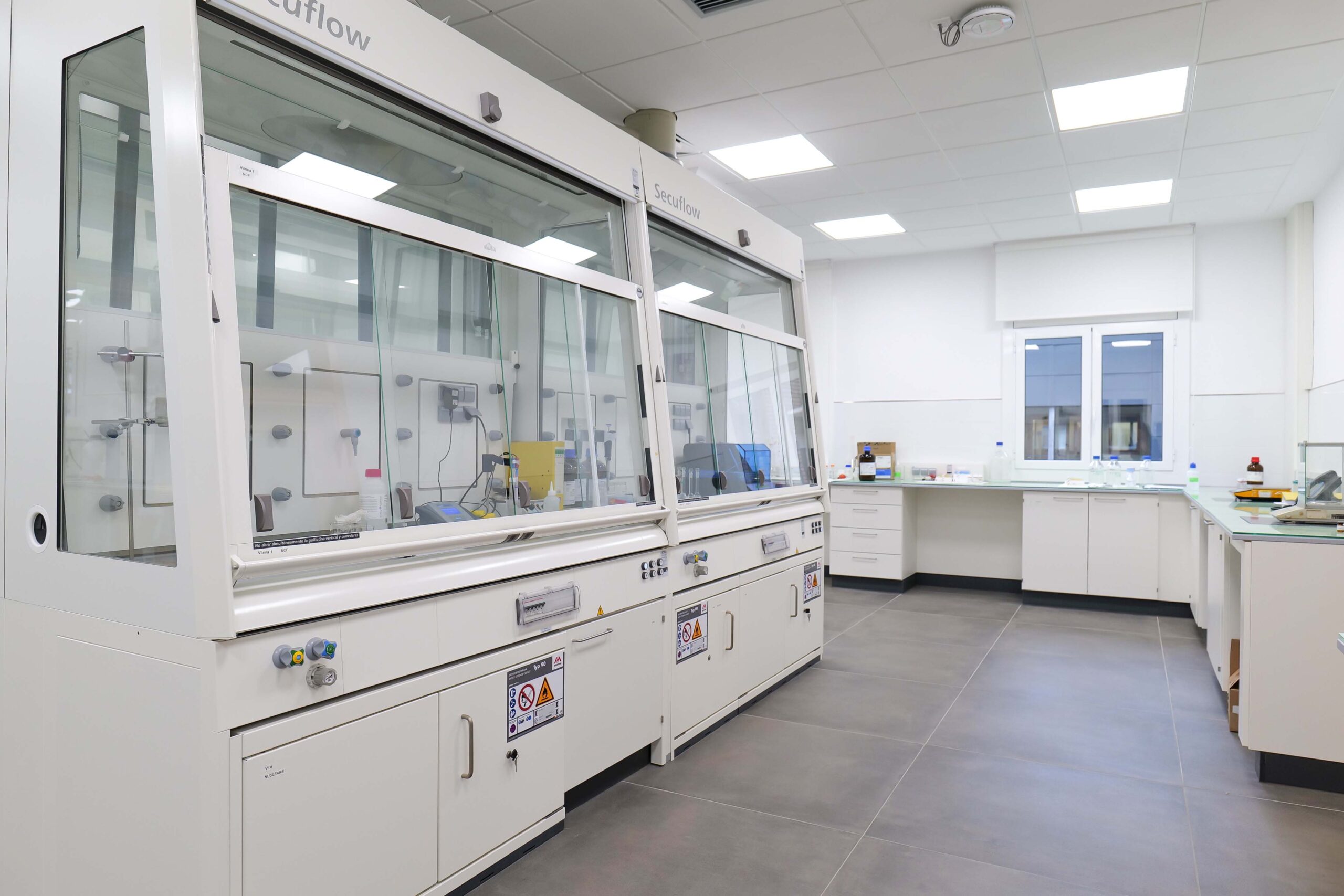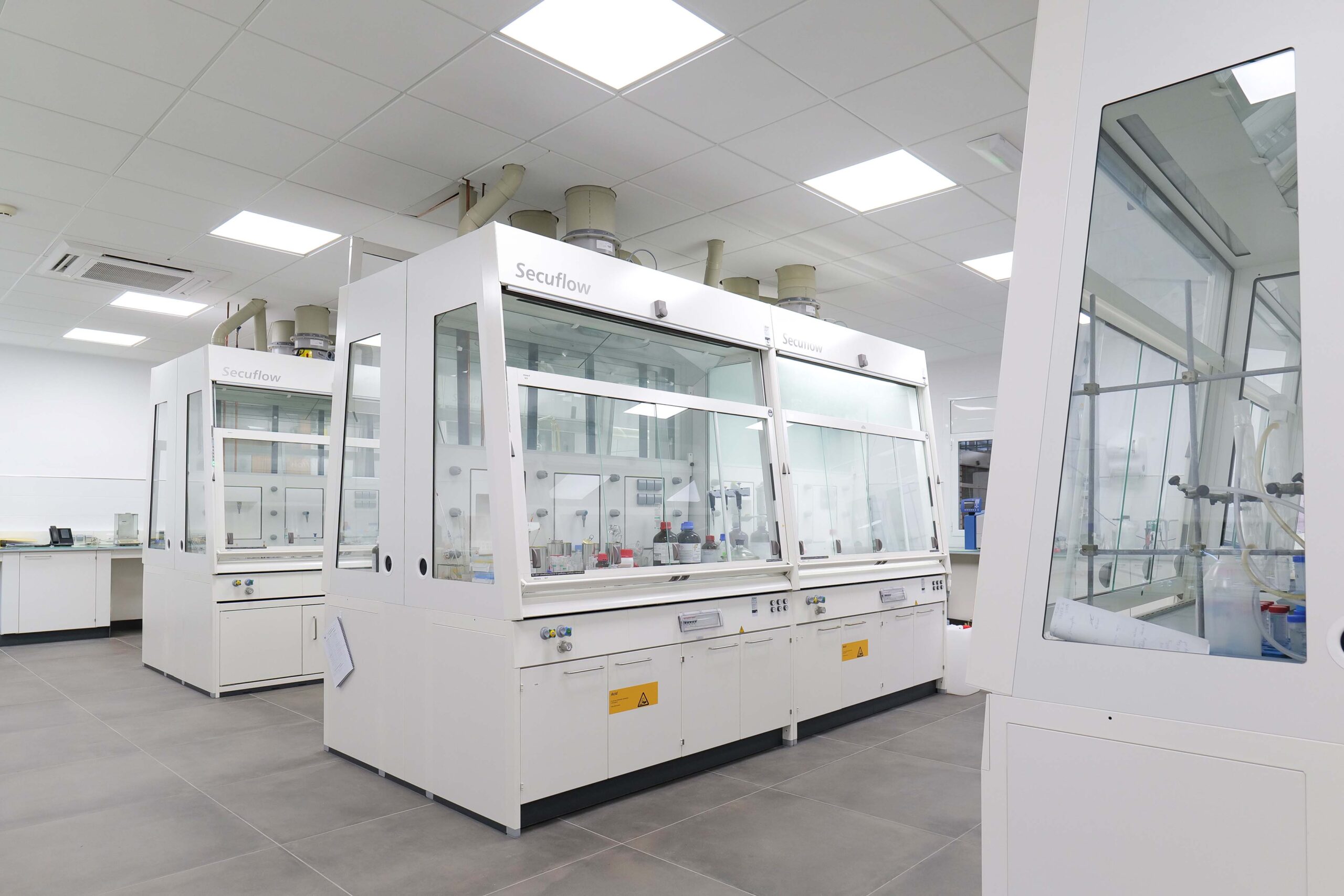IQS has recently made significant improvements to the laboratories that make up the Department of Analytical and Applied Chemistry (QAA), creating large, modern, and collaborative spaces that integrate much of the school’s analytical techniques, such as chromatography, mass spectrometry, atomic absorption spectrometry, and so on, which reflect our great commitment to promoting excellence in scientific research and services to industry, including in new areas such as bioanalysis and omic sciences.
These new facilities, which occupy a total of 400 m2 of surface area, are home to the current laboratories and services of the QAA Department, including: the Metal Analysis Laboratory, the IQS Sciex Demo Lab, the Chromatography Laboratory, and a new Bioanalysis Laboratory, about which we will share more information in the coming months. In addition, two new sample preparation areas have been incorporated: one for organic samples and a second for inorganic samples. With these new facilities, IQS has strengthened its capacity in the analytical studies it conducts within the framework of good manufacturing standards for the pharmaceutical industry.
The integration of the different analysis laboratories also gives visibility to the scope of relationships established with suppliers of advanced analytical instrumentation equipment as another way of doing research and technology transfer:
- The area dedicated to the analysis of metal traces features the installation of PerkinElmer equipment: AAS, ICP-OES, and ICP-MS. We should also highlight the ICP-MS equipment with its two broad modules of application beyond biomedical research: the Single particle, which makes it possible to determine the size and concentration distribution of nanoparticles, and the Single cell, which makes it possible to determine both the elemental concentration and the distribution of the nanoparticles at the individual cell level.
The collaboration with PerkinElmer has led to the offering of an industrial doctorate that is currently under way to study the capabilities of the SP-ICP-MS and SC-ICP-MS techniques in theranostic treatments.
- The IQS Sciex Demo Lab area features the installation of advanced high-resolution mass spectrometry SCIEX equipment, such as the X500B QTOF instrument, which allows undirected analysis of unknown compounds in complex matrices, and the 7500 QTRAP® instrument, which allows the quantification of compounds at trace levels (ppt, ppq). In addition, we should also highlight the recent addition of a third SCIEX device, which we showcase in this very Newsletter: a ZenoTOF7600 LCMSMS System with Zeno SWATH, which makes it possible to obtain high-resolution results with great sensitivity and which will facilitate research carried out in the field of omic sciences.
The teaching and research staff, as well as all the people who work in and for these laboratories, now have an environment that contributes to working with more security, more versatility, more collaboration, better equipment, and more enthusiasm above all!
Núria Vallmitjana i Palau
Director of IQS Tech Transfer










